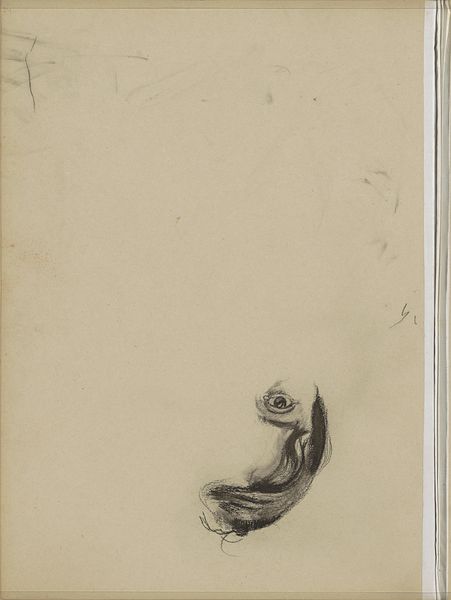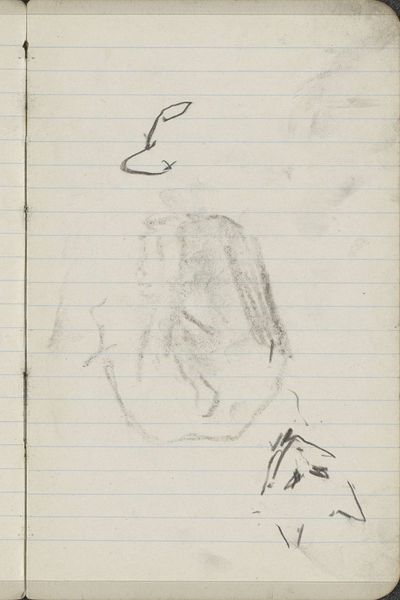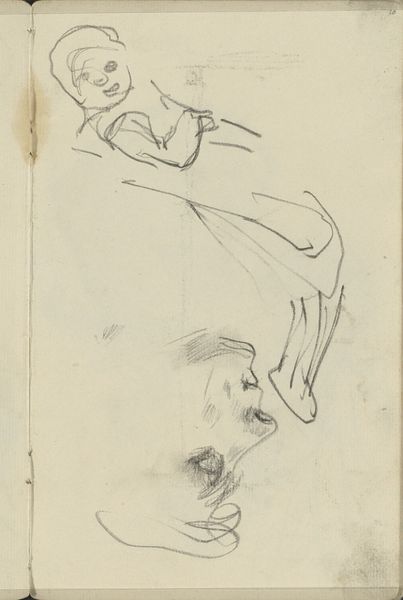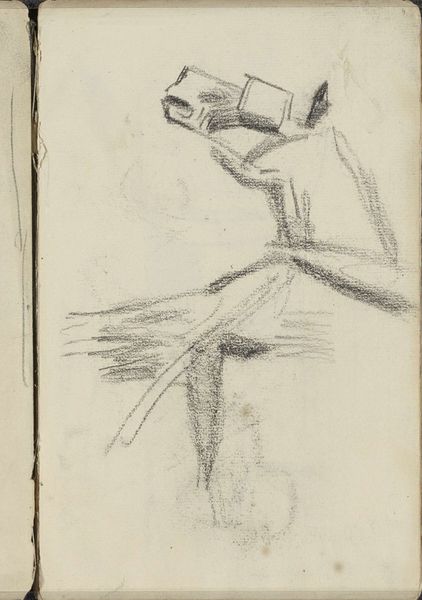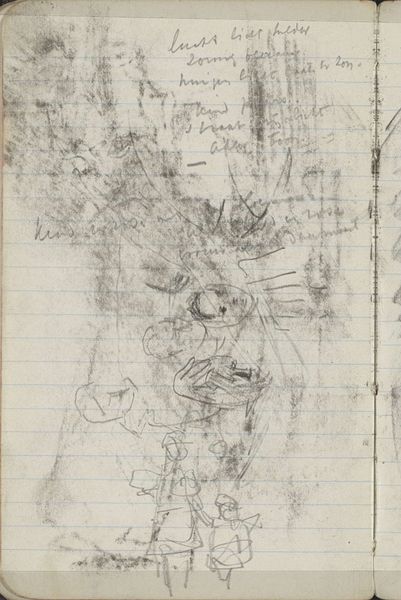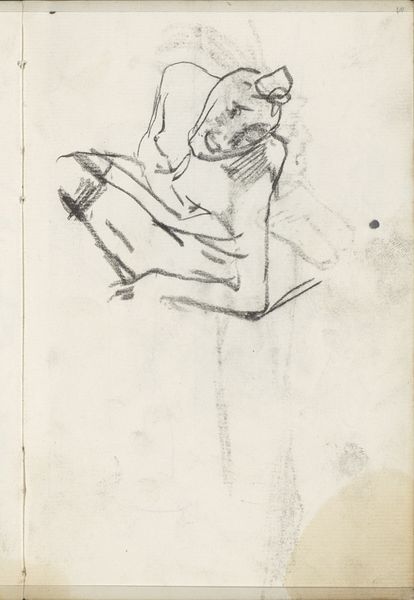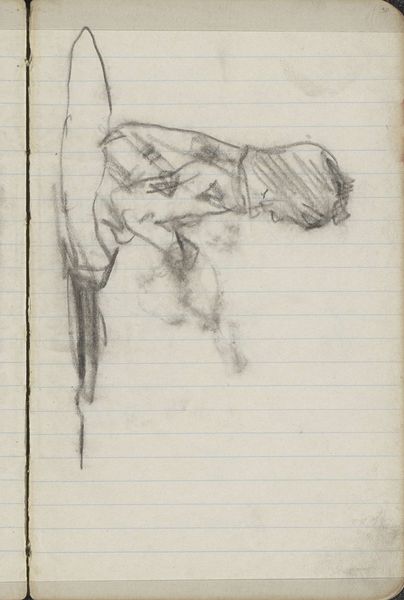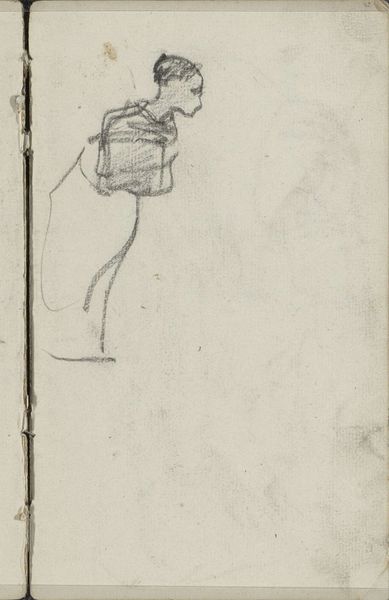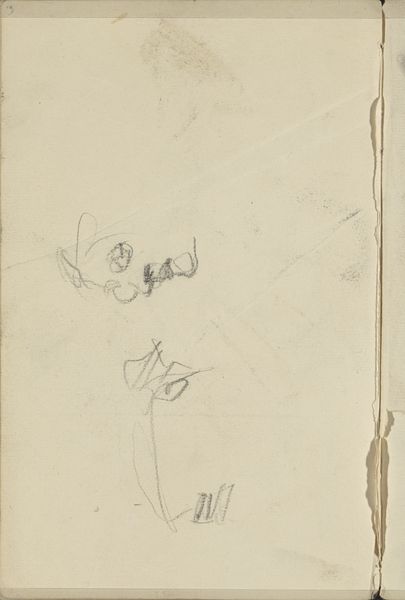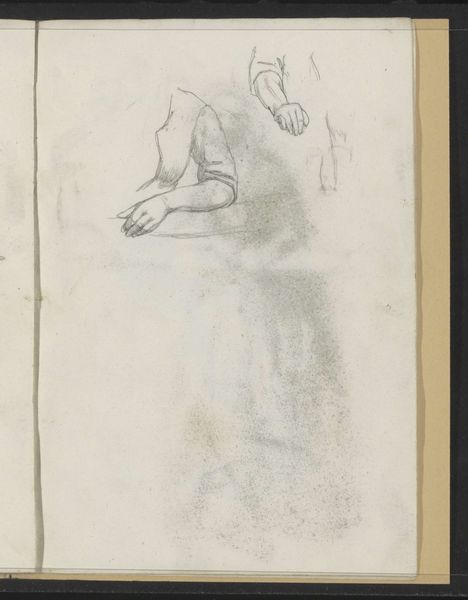
Copyright: Rijks Museum: Open Domain
Curator: This is “Figuurstudies,” or “Figure Studies,” a pencil drawing by George Hendrik Breitner, dating to 1893. It's currently held at the Rijksmuseum. What are your initial thoughts? Editor: Raw. Almost desperate. The pencil on lined paper gives it an immediacy. You can almost feel the artist sketching quickly, trying to capture a fleeting moment or gesture. It's so different from a polished oil painting. Curator: Breitner's work is fascinating when we view it through the lens of social class and the burgeoning industrial age of Amsterdam. Breitner himself was drawn to the working class, the streets, and the underbelly of society that many artists before him would not consider as subject matter. Editor: And it’s literally the underbelly here. These people are summarily placed in the sketch; it gives the impression of someone on the margins observing others in transit. Do we know if these are studies for other works or meant as final products themselves? The use of humble materials seems crucial. It emphasizes a sense of labor, process, and perhaps even Breitner’s relationship with his subject matter. Curator: Precisely! This sketchbook provides an intimate look at Breitner's process and artistic thought. This specific study also unveils how those often overlooked are given a different type of presence when recorded—there's a sensitivity in his observation that speaks volumes about the relationship between the artist, model, and audience, too. It humanizes his subjects despite the unfinished nature of the sketches. Editor: Yes, the material reality—the pencil, the paper, the lines that define the figures—reflect the immediate social reality he portrays. It suggests a desire to make art from the everyday, bypassing the grand narratives of academic painting. Curator: Right, and it challenges us to consider whose stories were deemed worthy of representation in 19th-century art and by whom. Breitner carves a space for figures that may have been previously disregarded or othered. Editor: Absolutely. And that subverts art historical conventions. He doesn't elevate his subjects through traditional means but shows the inherent value in everyday life. It’s about making visible the lives and labor often made invisible by larger historical forces. I think considering art through this lens opens many fruitful paths forward. Curator: Agreed, it truly complicates how we understand not just this piece, but Breitner’s overall project. Hopefully our audience has also picked up on some similar considerations, or new perspectives entirely.
Comments
No comments
Be the first to comment and join the conversation on the ultimate creative platform.


